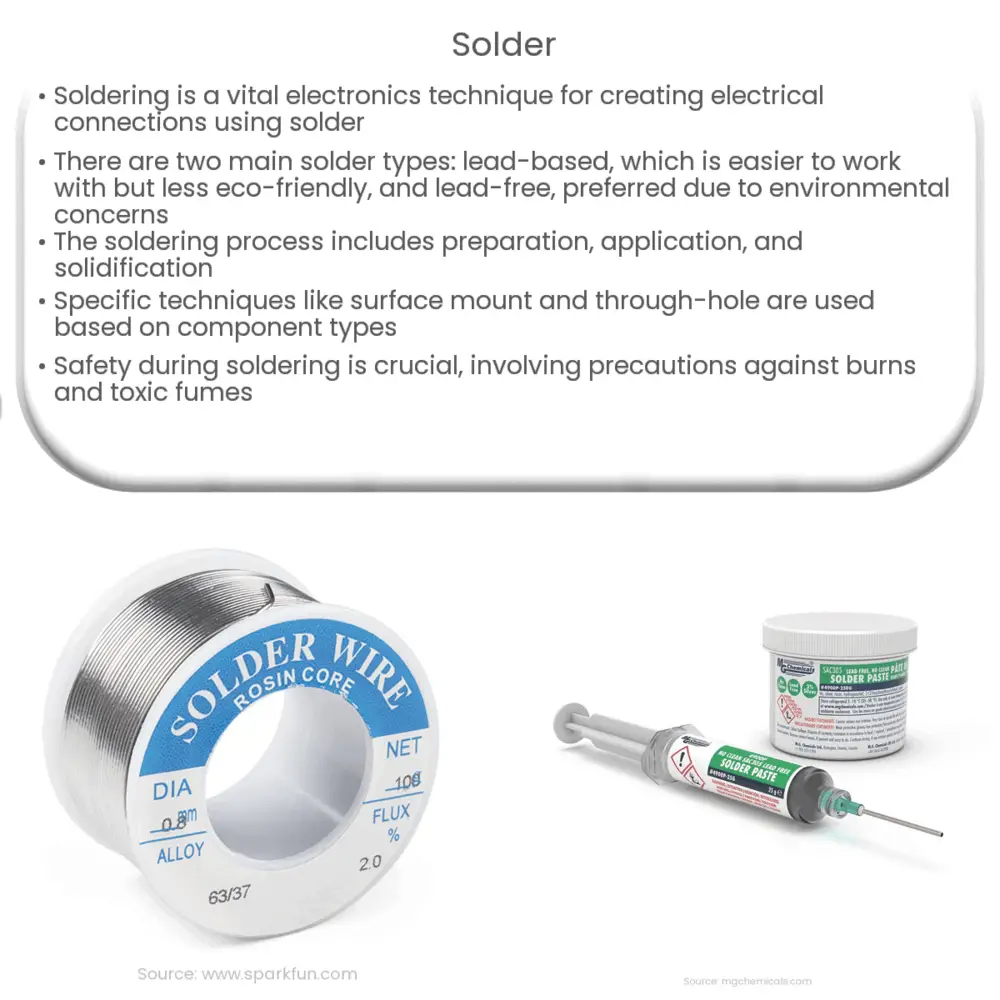Explore the fundamentals of soldering in electronics, from understanding solder types to mastering techniques, while ensuring safety.

Introduction to Soldering
Soldering is a fundamental technique in electronics that enables the creation of electrical connections between components and circuit boards. It involves the use of a material known as solder to form these connections. This article will delve into the understanding of this essential process.
What is Solder?
Solder is a type of fusible metal alloy that is used to create a permanent bond between metal workpieces. The primary types of solder are lead-based and lead-free solder, with each type having its unique characteristics and uses.
- Lead-based solder: This is traditionally the most commonly used type of solder. It usually contains a mix of tin and lead. It has a low melting point, making it easy to work with, but it’s less environmentally friendly due to the lead content.
- Lead-free solder: With growing environmental concerns and regulations, lead-free solder has become increasingly popular. It typically contains a mix of tin, copper, and other metals, but lacks the ease of use of lead-based solder due to a higher melting point.
The Process of Soldering
Soldering is a relatively straightforward process. The main steps involved are preparation, application, and solidification.
- Preparation: The soldering iron is heated to the appropriate temperature, and the surfaces to be joined are cleaned and prepared. Flux, a chemical cleaning agent, is often used to promote wetting and prevent oxidation during the process.
- Application: The heated soldering iron is used to melt the solder wire onto the connection points. The molten solder flows into the joint thanks to a physical phenomenon known as capillary action.
- Solidification: Once the solder has flowed into the joint, the soldering iron is removed, and the solder is allowed to cool and solidify, forming a strong, electrically conductive joint.
There are multiple techniques for soldering, including surface mount soldering and through-hole soldering. The choice of technique often depends on the complexity of the circuit and the type of components being used.
Soldering is a skill that can take some time to master. However, with practice and understanding, it becomes an invaluable tool in any electronics toolkit.
Soldering Techniques
There are several specific techniques and types of soldering, each appropriate for different applications. The two most commonly used methods are:
- Surface Mount Soldering: This technique is commonly used for surface mount devices (SMDs). These components are smaller and do not have long leads that go through holes in the circuit board. The solder is typically applied to pads on the surface of the board, and the components are placed on top before heat is applied.
- Through-Hole Soldering: This technique is used for components with leads that go through holes in the circuit board. The leads are inserted into the holes, and solder is applied to the point where the lead and board meet, forming a strong, conductive bond when it cools and solidifies.
Safety Considerations
While soldering is an invaluable skill, it’s important to be aware of the potential dangers and necessary safety precautions. These include the risk of burns from the hot soldering iron, toxic fumes from melting solder (especially lead-based solder), and the risk of damaging components with excess heat. Always work in a well-ventilated area, use appropriate safety equipment like eye protection and heat-resistant gloves, and ensure that your work area is clean and free of flammable materials.
Conclusion
In conclusion, soldering is a fundamental skill in electronics, enabling the creation of durable, conductive connections between components and circuit boards. Understanding the types of solder, the process of soldering, the techniques, and the safety precautions can allow anyone to harness this essential technique for their electronic projects. Whether you’re a hobbyist working on a DIY project, a student learning about electronics, or a professional electronics engineer, mastering the art of soldering is an invaluable skill that opens up a world of possibilities in the realm of electronics.

